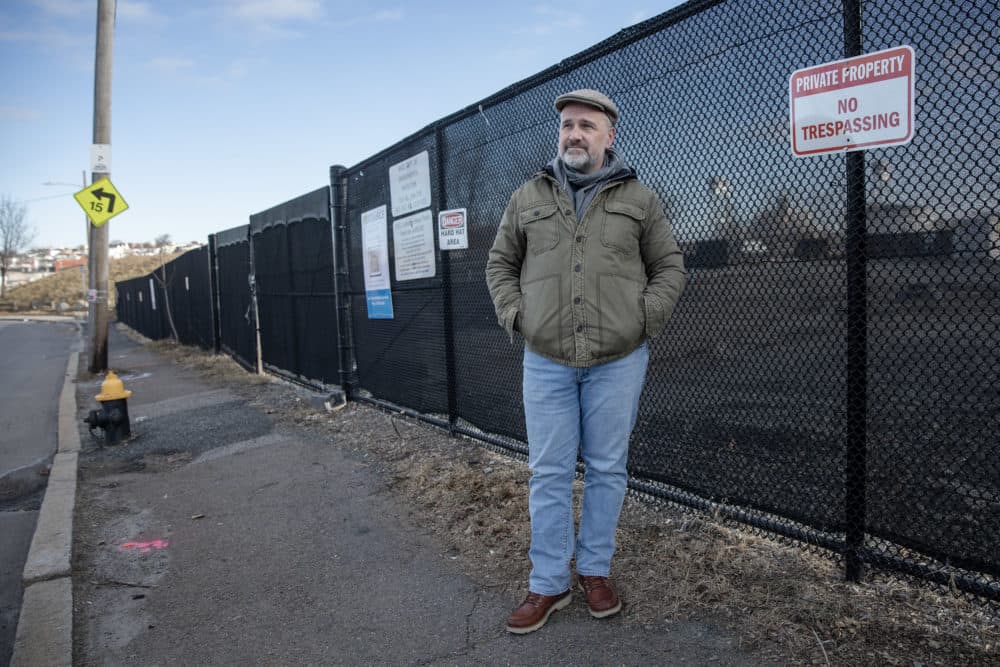In a blow to neighborhood activists, the Massachusetts Supreme Judicial Court ruled this week that the utility Eversource can continue building an electrical substation in East Boston. The decision ends a decade-long fight over a project many residents said was unsafe and unfair to their community.
In its order, the court said the state body in charge of reviewing the facility, the Energy Facilities Siting Board, did not violate state laws when it issued Eversource a special certificate that allowed it to bypass 14 state and local environmental permits. The company had been struggling to get those permits for more than a year.
The project became a symbol of how neighborhoods with many low-income residents often bear a disproportionate share of industrial infrastructure in Massachusetts. It also demonstrated severe flaws in the state’s process for selecting and approving energy sites. Those flaws have been decried by environmental advocates, utility leaders and state officials alike.
The court’s decision also comes as yet another painful loss to East Boston residents, many of whom said they weren’t notified about the project early on and were not provided adequate translation services to participate in public meetings. Many residents also said that the location Eversource chose for the project is dangerous and would deprive the neighborhood of promised soccer fields.
Electrical substations like the one Eversource is building are critical pieces of infrastructure that take high-voltage electricity from transmission lines and “step it down” to a voltage that can be used in homes and businesses. Though generally safe, in 2022, an Eversource substation in Newton caught fire and left one worker injured, and another exploded in downtown Lexington. No one was injured in that explosion.
Although Eversource maintained the project posed little risk to the surrounding community, the site is located in a flood-prone area along Chelsea Creek and across the street from a popular playground. It’s also near millions of gallons of jet fuel for Logan Airport and a gas station.
“East Boston, once again, has gotten screwed,” said John Walkey, an East Boston resident and director of waterfront and climate justice initiatives at GreenRoots, the environmental nonprofit that led the fight against the substation. He said the court’s decision is “not unexpected,” because the system for approving energy projects “is not functioning, and this is a good indication of it.”
State Rep. Adrian Madaro, a Democrat and lifelong Eastie resident, agreed: “This is just an additional disappointment in a process that has been ridden with disappointment.”
After years of hearings, legal battles and public outcry, the energy siting board approved the project and then allowed Eversource to bypass the remaining permits. Construction on the substation began last January.
But the story didn’t end there. GreenRoots and the Conservation Law Foundation challenged the siting board’s decision to issue the special permit on a few grounds, most notably that it violated the state’s 2021 environmental justice law.
The landmark law holds that “all people have a right to be protected from environmental hazards and to live in and enjoy a clean and healthful environment regardless of race, color, national origin, income, or English language proficiency.” It also calls for “meaningful involvement of all people” in environmental policy and development.
Among the arguments in their appeal to the SJC, GreenRoots and the Conservation Law Foundation noted that East Boston, a largely working class community with many non-English speaking immigrants and people of color, is a state-designated environmental justice neighborhood that is already overburdened by industrial infrastructure like Logan Airport and major highways. The neighborhood has very little green space. Building the substation in the location Eversource chose, they argued, would deprive residents of access to one of the last undeveloped spaces along the waterfront.
The plaintiffs also argued Eversource and the siting board failed to meaningfully involve the public. But the SJC rejected this claim, writing the siting “board met its obligation to ensure ‘meaningful involvement’ by all people.”
The court also found any environmental harms from the project were outweighed by the benefits of more reliable electricity and noted that Eversource did soil remediation as part of construction.

In a statement, Eversource spokesman William Hinkle said the SJC’s decision affirms the company’s belief that the substation is “critically needed” infrastructure, and the siting and permitting process was “comprehensive” and involved the community.
“We remain committed to strong community engagement as this project moves forward,” Hinkle wrote.
“It’s been a long and tiresome fight, and I am disappointed in the SJC decision,” said Marcos Luna, an East Boston resident and professor in the Geography and Sustainability Department of Salem State University who has used computer models to demonstrate the risk sea-level rise poses to the project. “Eversource and the [siting board] did not treat this community fairly, and their siting choice for an electrical substation will likely be problematic in the long run.”
However, he added, there may be a silver lining: “Maybe one good thing that has come out of the fight in East Boston is that it has brought more light and scrutiny to energy infrastructure siting practices,” he wrote.

Walkey of GreenRoots agreed, noting that during the years he and others in the community spent fighting this project, they have seen the state and Eversource make changes to better involve the community and be more transparent.
He cited ongoing efforts at the State House to improve how sites for energy projects are selected and approved.
It may be cold comfort for his neighbors who have to look at the substation every time they go to the playground, he said, “but the process is changing.”
